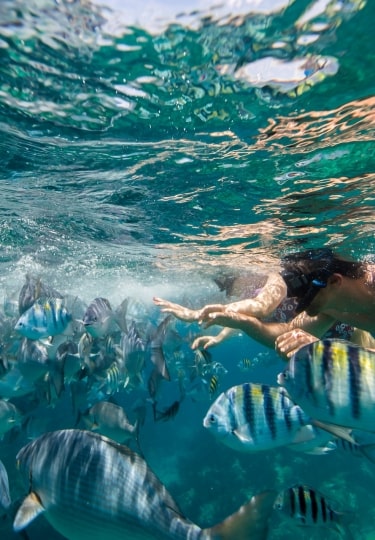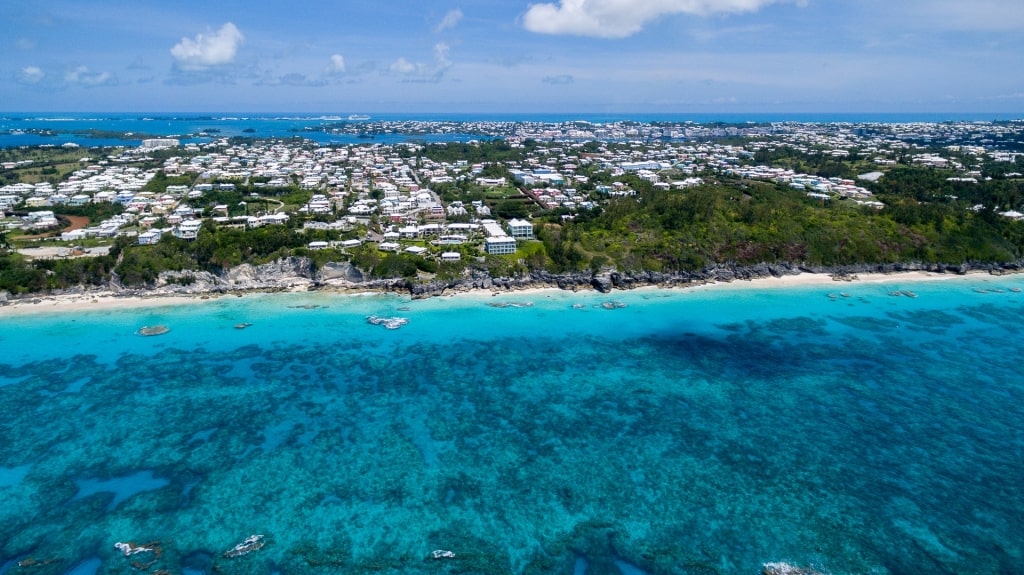Bermuda snorkeling provides a spectacular mix of marine environments for beginners and experts alike, from teeming coral reefs to centuries-old shipwrecks. With locales other regions simply can’t match, the seven main islands of Bermuda and the reefs that surround them offer some of the finest snorkeling opportunities in the world.
The islands’ unique status as a natural habitat for a rich mix of sea life and as a prime stop along the shipping lanes of eras past are prime contributors to the esteemed reputation of Bermuda snorkeling.
In fact, the Bermuda Islands were once known as the “Isles of Devils” because the reefs claimed more ships than any other place in the region; some 600 wrecks in total. Today, though, this remote island is a serene place, with clear water, exquisite coral formations, pink sand beaches, and abundant snorkeling opportunities in the warm, shallow waters.
Here are 12 of the best places to go snorkeling in Bermuda.
The Montana Shipwreck, Western Blue Cut
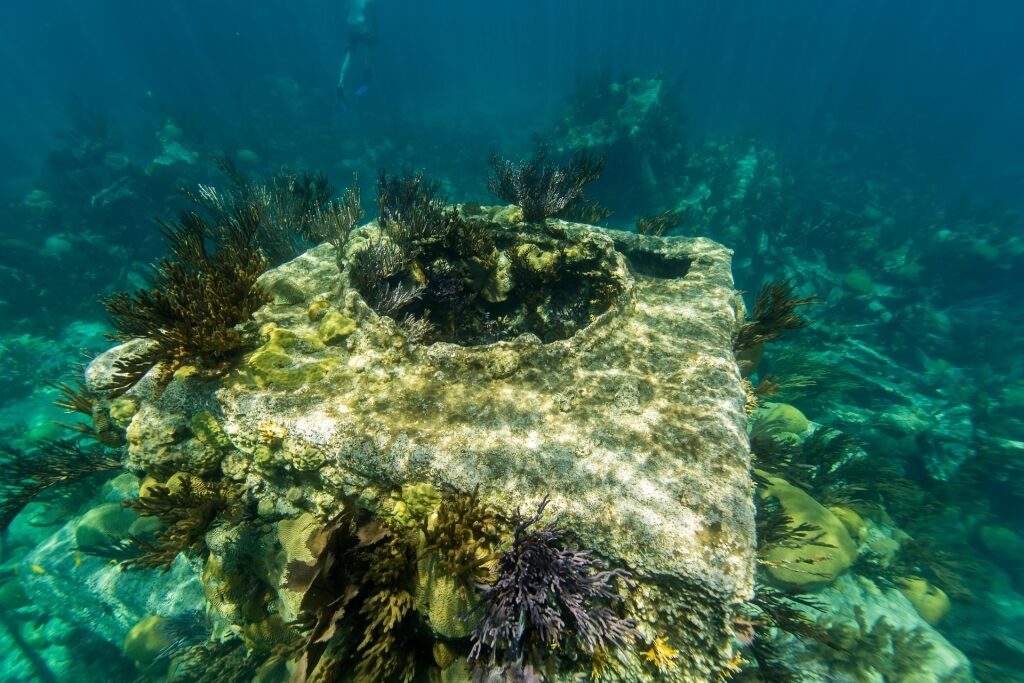
The Montana Shipwreck, Western Blue Cut
With a history forged in war, the Montana was a 236-foot paddle steamer out of London intended to serve as a blockade runner for Confederate forces during the Civil War.
Unfortunately, its captain decided to make a run during the more dangerous winter season and encountered rough seas near Bermuda en route for Wilmington, North Carolina. The Montana struck a reef along Western Blue Cut and sank on December 30, 1863. All crewmen survived.
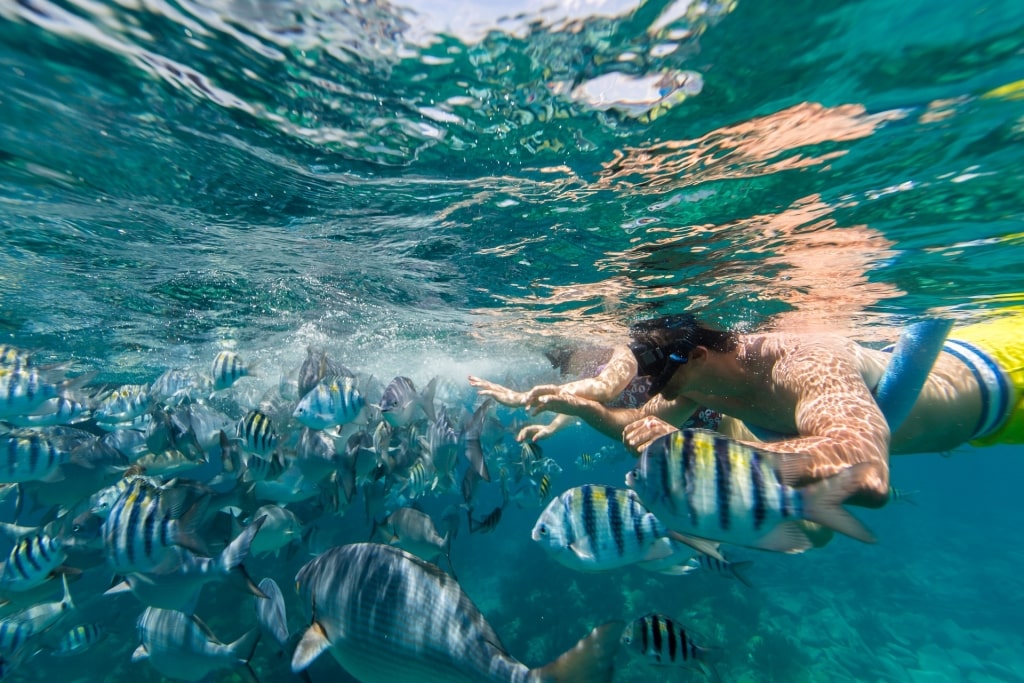
The Montana Shipwreck, Western Blue Cut
In the case of the lost Montana, the southern rebels’ loss became a gain for lovers of Bermuda snorkeling as it settled into shallow water at a distance from shore that makes it a comfortable excursion.
Though it’s now incorporated into the marine habitat, much of the Montana’s original frame is still visible where it settled more than 150 years ago; you can still see the paddlewheels, for example.
As one of the best islands for snorkeling, adventurers will find themselves surrounded by trumpetfish, puffers, snappers and busy cleaner wrasse.
Constellation Shipwreck, Western Blue Cut
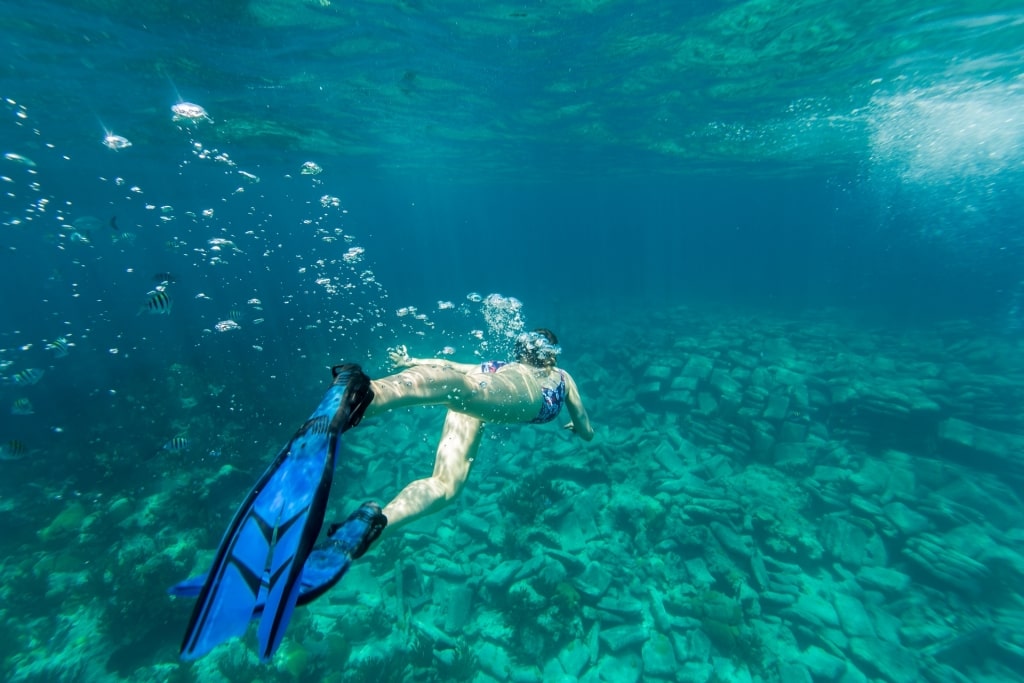
Constellation Shipwreck, Western Blue Cut
Built in 1918, the four-masted schooner Constellation set sail from the New York docks in 1943 with a varied cargo—including 700 cases of Johnny Walker whiskey—bound for Venezuela.
Evidently less than seaworthy, the Constellation began taking on water. She changed course for Bermuda to make repairs, but her captain did not know Bermuda’s waters.
The ship hit the Western Blue Cut reef northwest of Bermuda and sank. The crew escaped, but only 300 cases of whiskey survived.
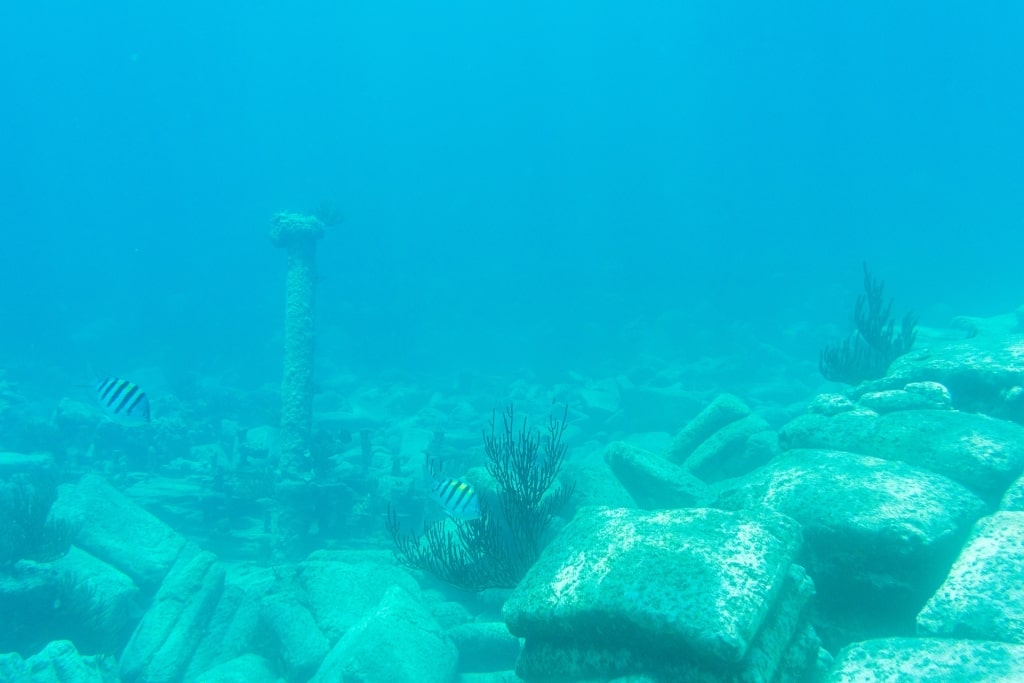
Constellation Shipwreck, Western Blue Cut
Divers today can explore an untouched collection of the Constellation’s lost cargo, with the masts visible from as shallow as eight feet below the surface. You’ll see bags of cement on the seabed, many of them now colonized by fish.
The wreck lies an hour by boat from the island’s north shore. It’s close to where the Montana went down a century earlier, making it possible for enthusiasts to snorkel both wrecks in a day.
If you’re scuba certified, this is also an easy and shallow dive that will get you even closer to the wreck and its mysteries.
Horseshoe Bay Beach
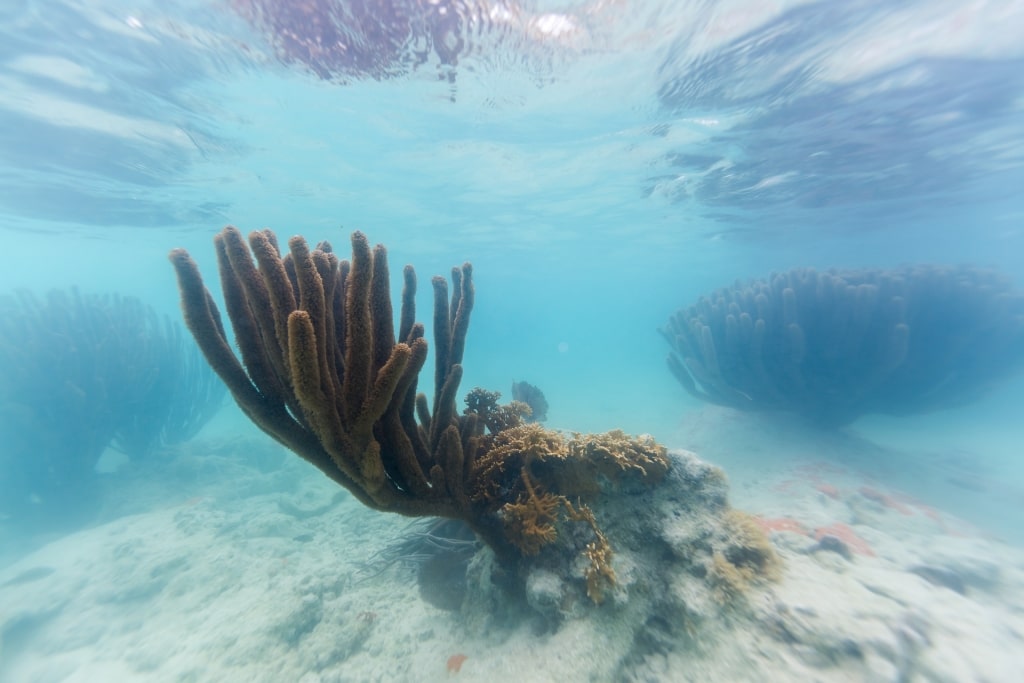
Horseshoe Bay Beach
The same coral reefs that sank ships 200 years ago and protect their wrecks today also create another highlight of snorkeling in Bermuda—abundant and colorful sea life.
In fact, considering Bermuda’s location well north of the Caribbean, it hosts some of the northernmost coral reefs in the world.
The island’s position in the Atlantic makes it an ideal stopover for many of the ocean’s migratory species. Depending on the season, you could see dolphins, whales, turtles, sharks, and many species of birds.
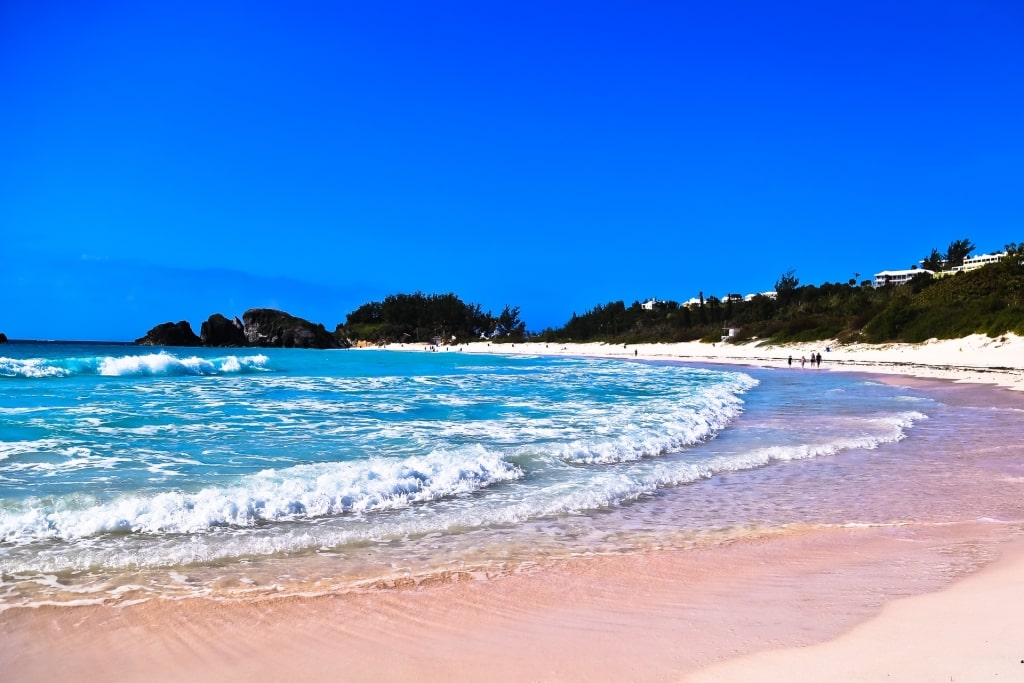
Horseshoe Bay Beach
One of the most popular natural attractions throughout all of Bermuda, Horseshoe Bay Beach took on its name due to its sharp curves—making it a natural cove that protects the wildlife it hugs.
You’ll quickly notice one of the area’s most intriguing features—its unmistakable pink sand. The crushed remains of shells that local crustaceans have discarded over the ages give the grains that unique color.
On Horseshoe Bay Beach, enjoy a relaxing excursion among dazzling sea life. Look out for parrotfish munching on the coral, as well as big shoals of striped sergeant majors.
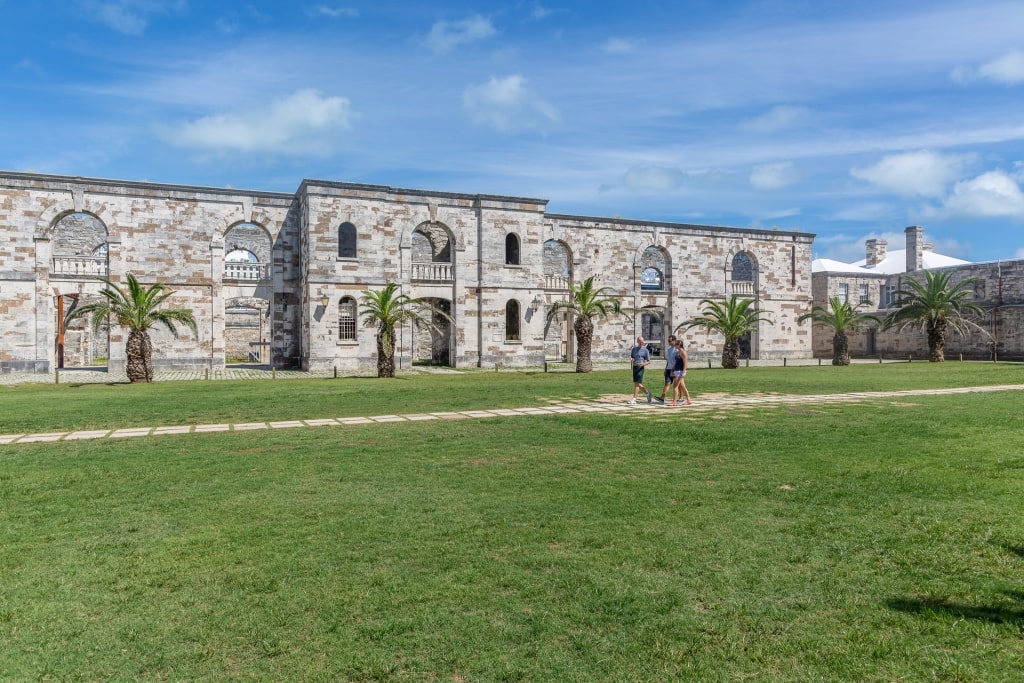
Royal Naval Dockyard
Once out of the water, some of the most unique things to do in Bermuda include exploring the small, but intriguing caves just off the beach or taking the short journey to the nearby Royal Naval Dockyard.
Warwick Long Bay Beach
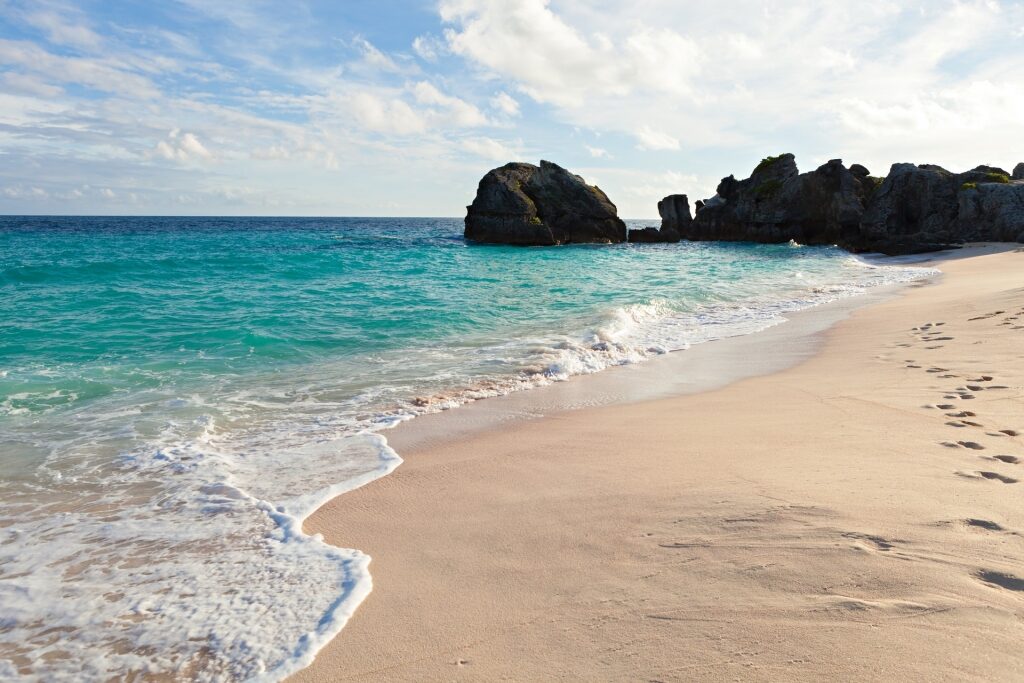
Warwick Long Bay Beach
Located along Bermuda’s southern coast, Warwick Long Bay Beach is both rugged and wild in appearance and gentle and welcoming out in the water.
The sands slope gently out into a quiet bay, and a snorkeling foray to less than 50 yards from the shore brings you face to face with schools of colorful parrotfish, dignified angelfish, big grouper and shoaling sergeant majors.
If you’re traveling with children who might be uncomfortable with the wide-open beaches of Warwick Long Bay, a short walk to nearby Jobson’s Cove offers warm, safe and shallow waters perfect for less experienced snorkelers.
Jobson’s Cove Beach
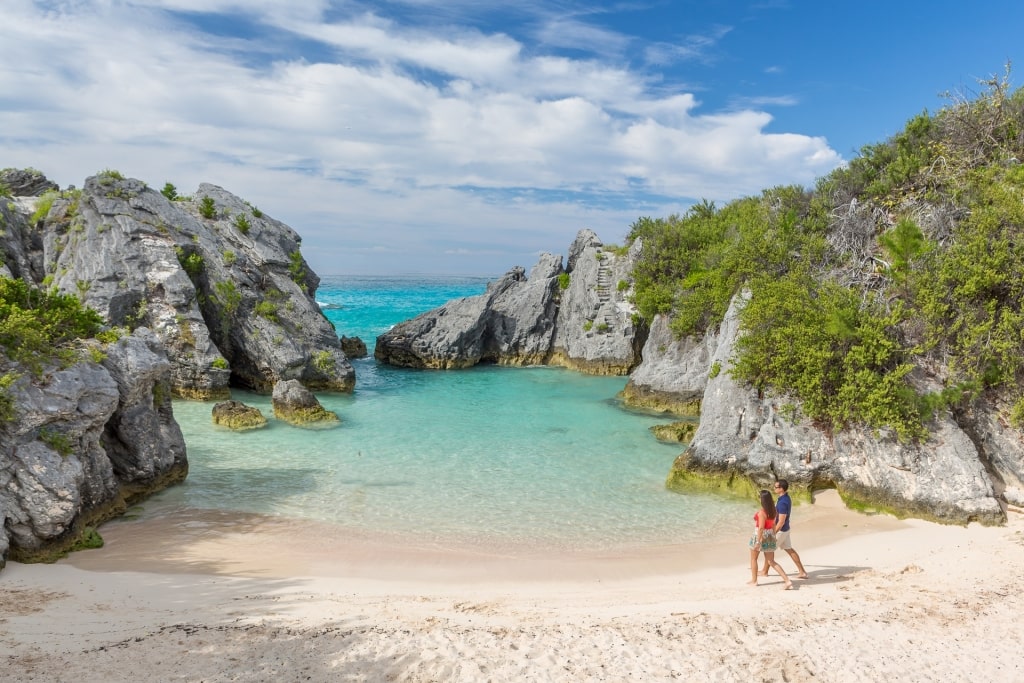
Jobson’s Cove Beach
This surrounding terrain of steep, sharp cliff faces is a drastic counter to the very peaceful waters lining Johnson’s Cove Beach, one of the best beaches in Bermuda.
The lagoon has the comfortable, easy feel of an artificial swimming pool—but its natural environment offers an opportunity for less-experienced swimmers eager to explore the tropical fish habitat. Swim closer to the rocks and you could be in an aquarium, so abundant is the marine life.
Clearwater Beach
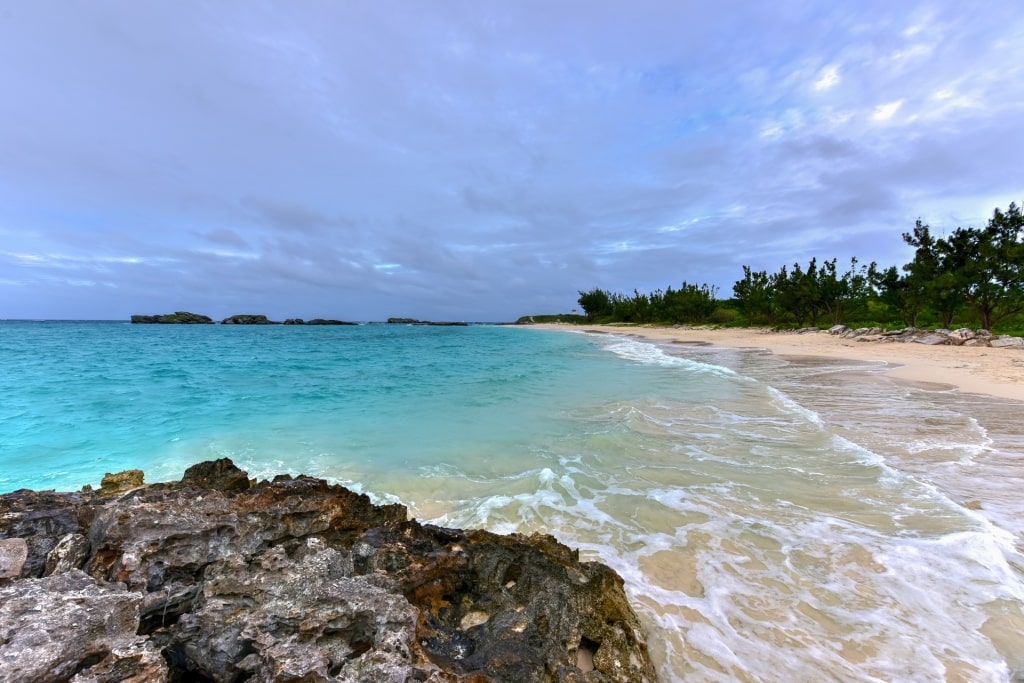
Clearwater Beach
Sometimes, the origin of place names is obvious to everyone. The label for Clearwater Beach seems natural the minute you look out on its calm, clean, and shallow waters. Though a little out of the way for some locals, this beach sits on the southeastern coast near L.F. Wade International Airport.
Clearwater is actually a man-made beach originally built by the U.S. Navy when the area was used as a U.S. Naval Air Station. After that base closed in 1995, the area around Clearwater Beach became the Cooper’s Island Nature Reserve—a zone protecting both the surrounding wildlife and the countless sea creatures waiting to welcome fans of Bermuda snorkeling.
There’s no reef here, so you won’t find the usual reef fish; instead, fields of seagrass attract sea turtles, gliding gracefully through the blue. Look out for giant conch shells on the seabed, too.
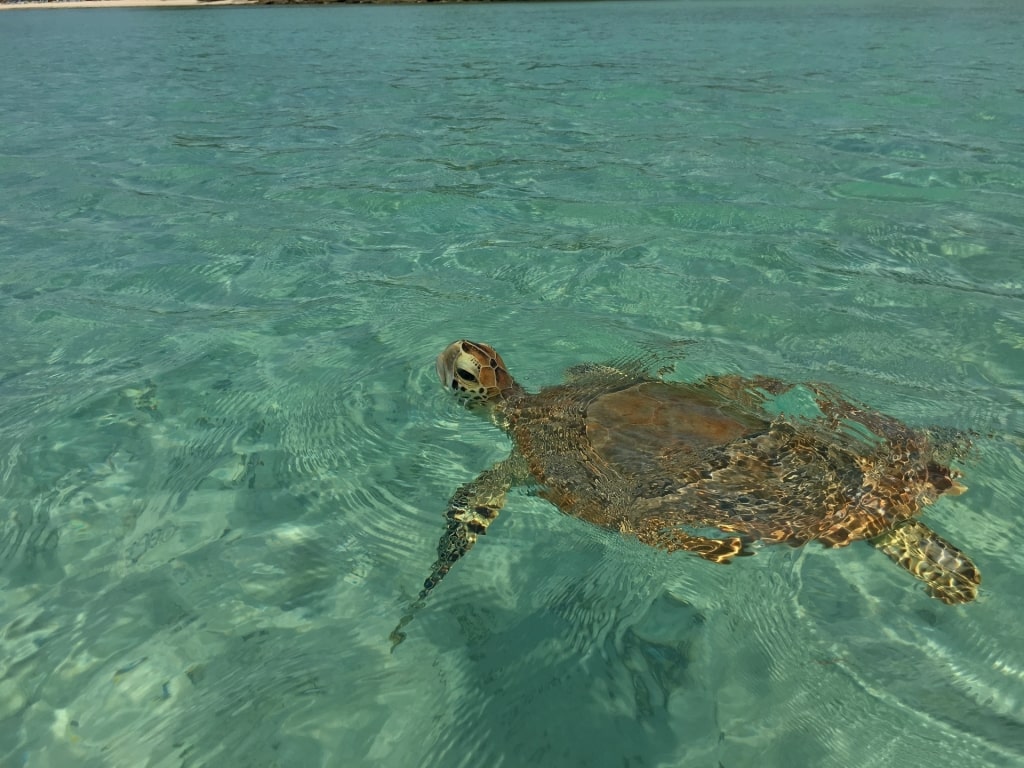
Turtle Bay Beach
If Clearwater is busy, Turtle Bay Beach, a little further on, is likely to be quieter, and as its name suggests, offers a very good chance of spotting sea turtles.
Elbow Beach
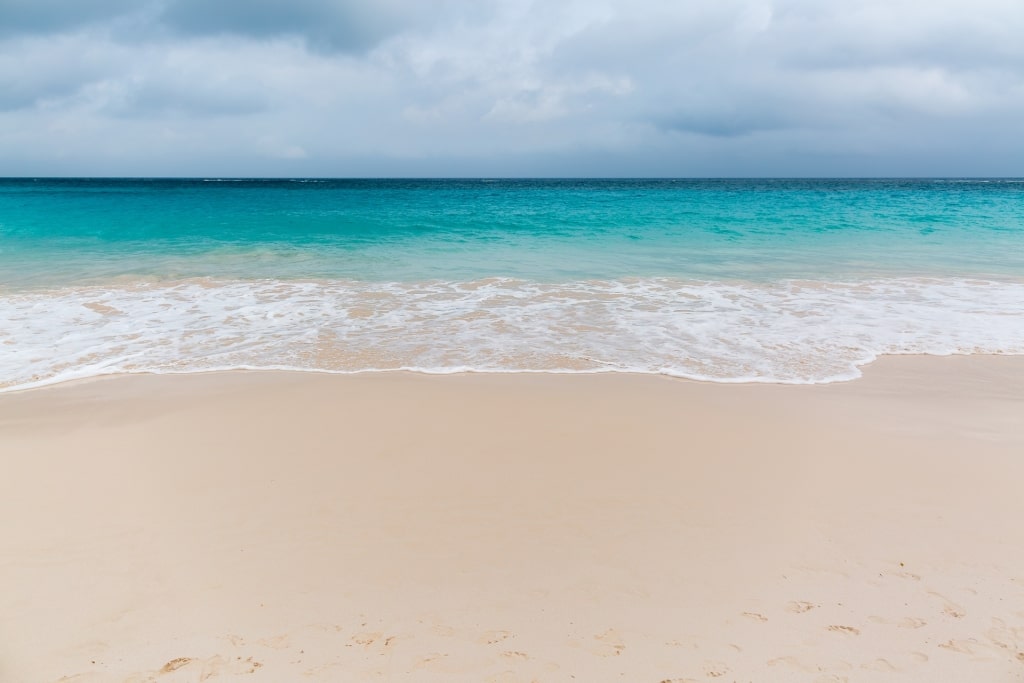
Elbow Beach
Elbow Beach sits behind one of Bermuda’s most prominent coral reefs. That natural structure helps to break the waves, cutting down on the ocean current and sea breeze and keeping the waters calm and safe for fans of snorkeling in Bermuda.
If the water is calm and the wind not too strong, treat yourself to a drift snorkel here. This means you enter the water at one end of the beach, swim the short distance to the reef, and let the current carry you gently over the coral to the other end of the sand, with no effort on your part at all.
You should see all manner of marine life, from electric blue surgeonfish to grouper, jack, the long, skinny trumpetfish, and maybe octopus.
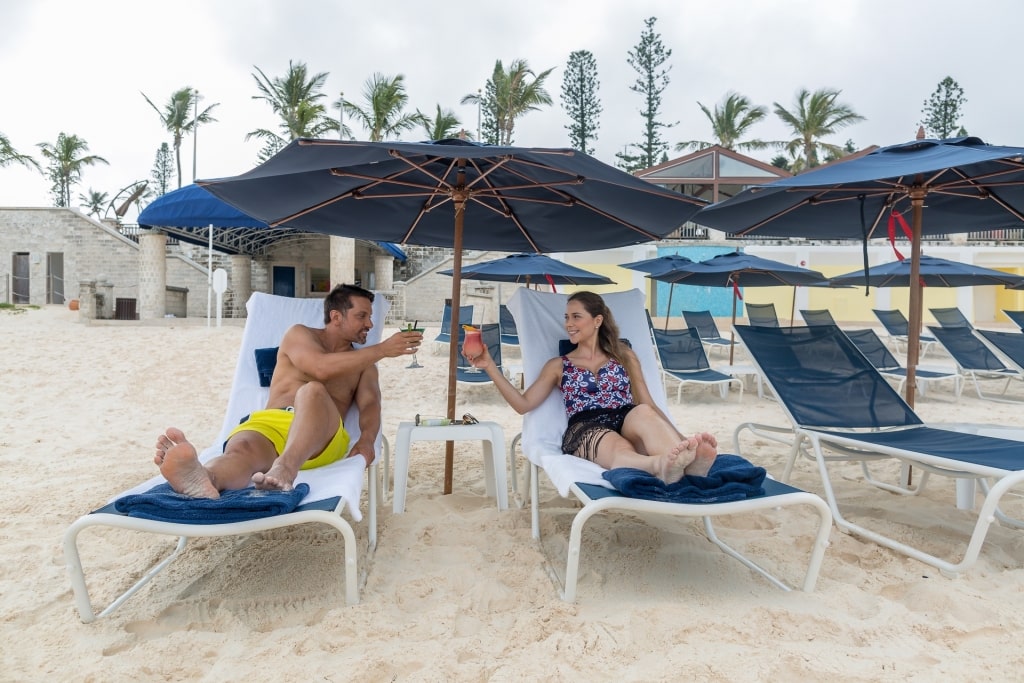
Elbow Beach
A quick walk from Elbow Beach takes you to a selection attractions and restaurants serving authentic Bermuda food. The most popular isn’t a snorkeling destination, but still isn’t to be missed after your swim. The Masterworks Museum of Bermuda Art is just a mile away from Elbow Beach and includes more than 1,400 artworks created by native islanders.
HMS Vixen Wreck, Daniel’s Head
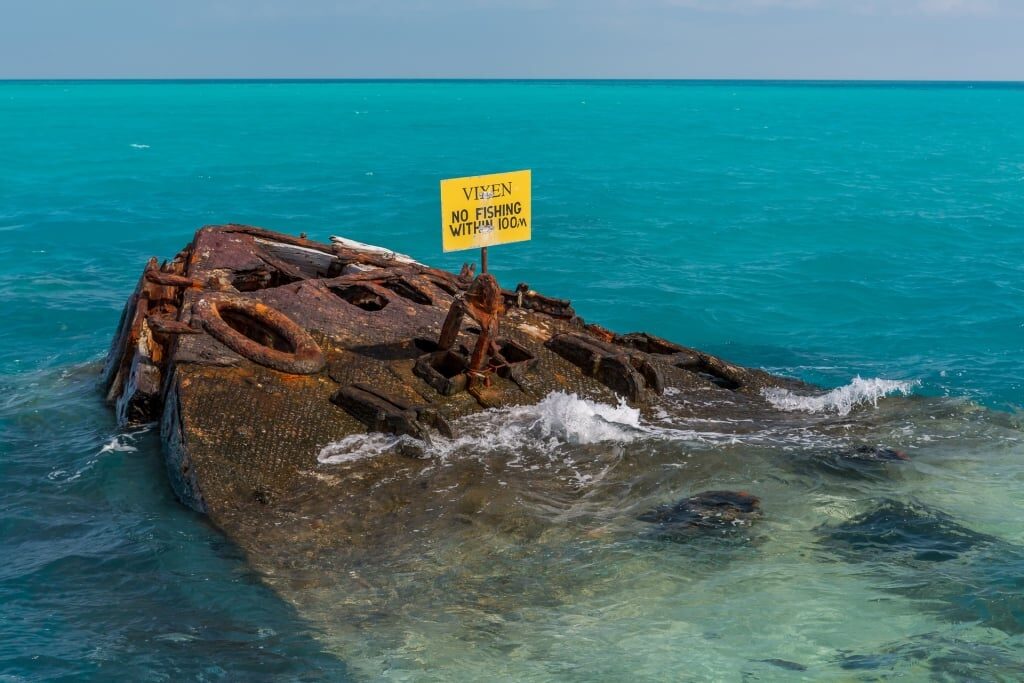
HMS Vixen Wreck, Daniel’s Head
Sunk deliberately, the HMS Vixen was a Royal Navy gunboat launched out of the UK in 1866. After serving her military career, she was supposed to be sold for scrap in Bermuda. However, the military brain trust at the time decided Bermuda needed protective barriers in key spots around the island.
The Vixen was scuttled in 1896 near Daniel’s Head off Bermuda’s west coast. The ship split in half as it sank and now sits in about 30 feet of water amid an active coral reef.
Unlike other wrecks welcoming Bermuda snorkelers, the bow of the Vixen still rises above the water, easily marking its location. Remember, though, that taking anything from a wreck is strictly forbidden in Bermuda.
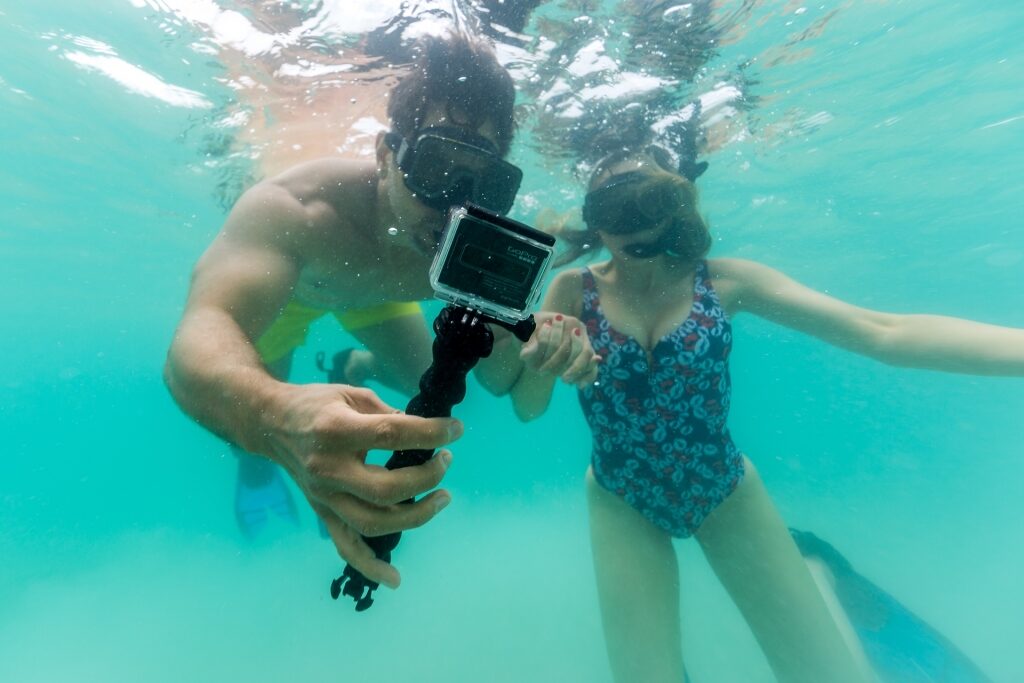
HMS Vixen Wreck, Daniel’s Head
Note, too, that because this wreck is easily accessible, it can attract a fair amount of boat traffic. You’re better off going on an organized snorkel tour here with a safety boat that will indicate to other boats that there are swimmers in the water—and a local guide who knows the best spots.
Hopefully, they will take you to the Sea Garden near the Vixen. This is a section of particularly beautiful brain coral and sea fans, with dazzling marine life.
Eastern Blue Cut and the Blue Hole
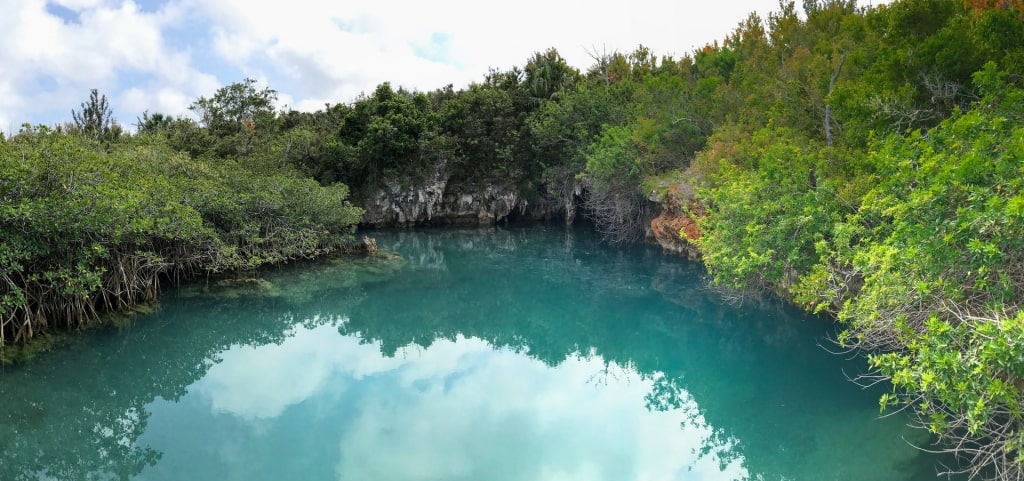
Blue Hole Park
The Eastern Blue Cut is another break in the reefs that surround the island and a prime spot for snorkelers and divers.
At one end of the cut, an area of pale sand surrounded by coral looks from the air like a blue hole, hence the name. This is not to be confused with Bermuda’s Blue Hole Park, an underground cave system amid the mangroves.
Divers at the Blue Hole have a chance of seeing different species at depth, not least eagle rays feeding on the sandy seabed and processions of spiny lobsters.
Snorkelers have plenty to admire, too, in shallower depths over the top of the reef, where hundreds of parrotfish mill around, as well as angelfish and butterflyfish.
Tobacco Bay Beach
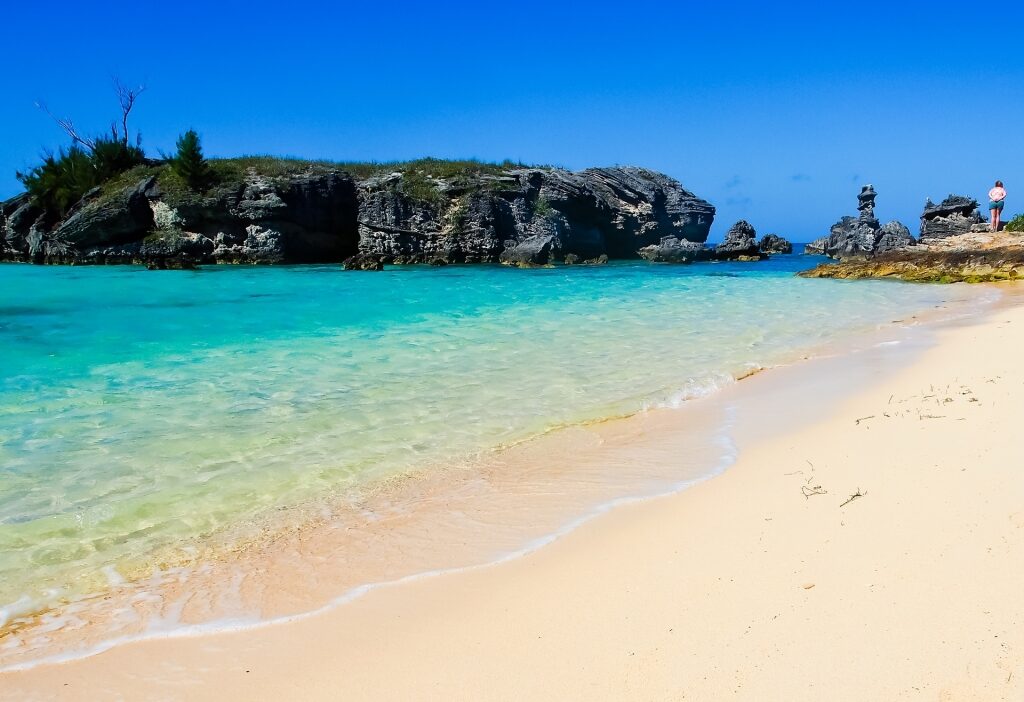
Tobacco Bay Beach
One of Bermuda’s most popular and historically significant beaches, Tobacco Bay played a major role in America’s Revolutionary War.
In 1775, as battles were going against the colonial rebels, a band of Bermudians sympathetic to the cause of the American Continental Congress pulled off a daring mission now known as the Gunpowder Plot (not to be confused with the ill-fated effort of Guy Fawkes in 1605 London).
On the night of August 14, 1775, the Bermuda gang stole more than 100 barrels of gunpowder from the arsenal of the Royal Navy in St. George. They rolled the barrels across the island to Tobacco Bay and shipped them secretly to Philadelphia where the rebels put them to victorious use.
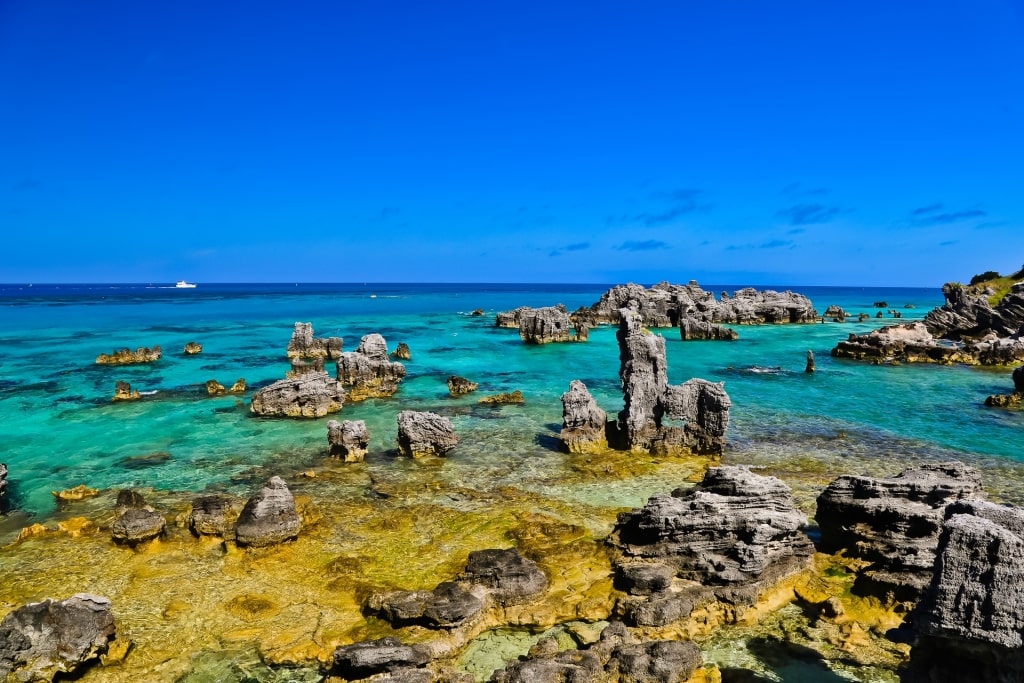
Tobacco Bay Beach
Today, Tobacco Bay Beach offers snorkelers a chance to swim in warm, shallow water among some of the island’s most intriguing underwater rock formations and the wide variety of marine life.
Since Tobacco Bay is a more popular destination, you’ll probably find yourself in the company of other snorkeling enthusiasts.
Church Bay Beach
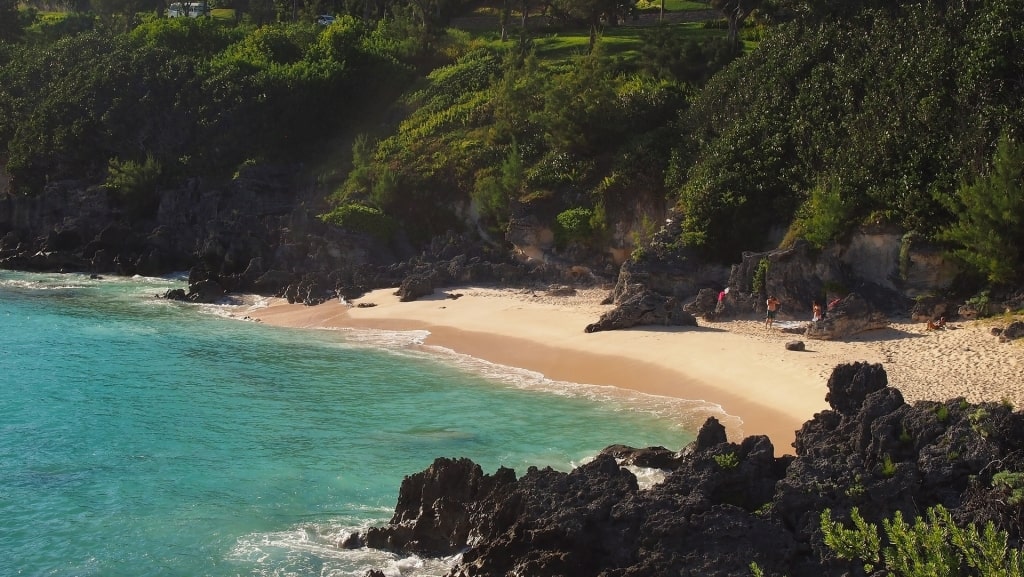
Church Bay Beach
A pretty cove backed by green cliffs, Church Bay on the island’s southern shore features the pale pink sand beach for which Bermuda is famous. The snorkeling here is excellent and the reefs are at a shallow depth, making this the perfect spot for novices and children.
The tumbled rocks at either side of the beach are particularly rich in marine life, and you should see plenty of angelfish and wrasse here.
North Rock
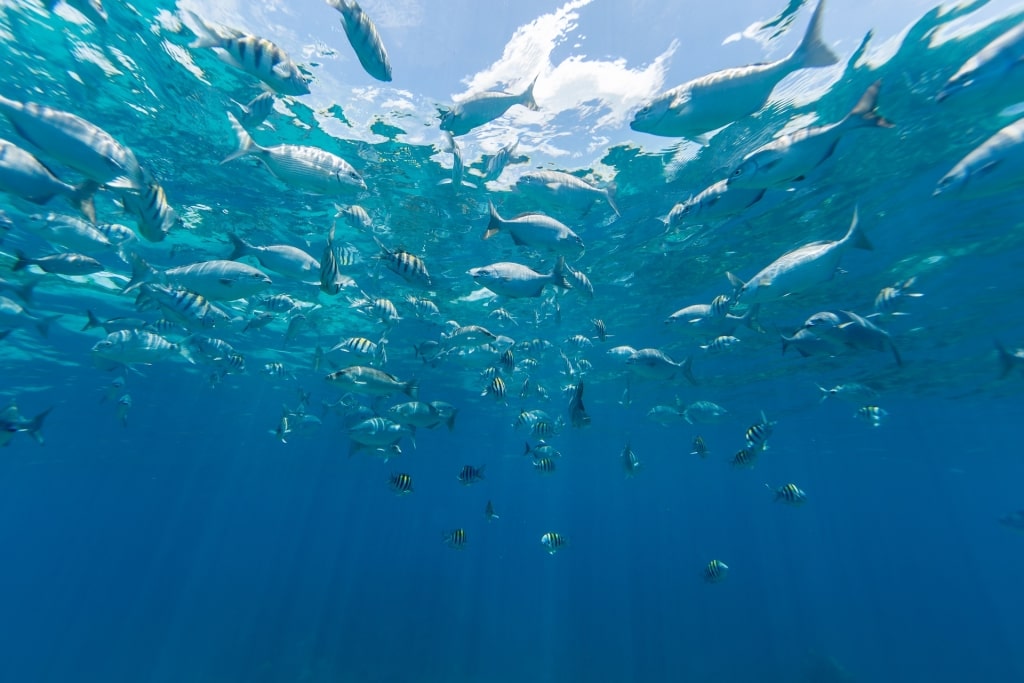
North Rock
A little more out of the way, North Rock is located approximately seven miles from the east end of Bermuda, but it’s easily reached by boat.
Local marine experts rate North Rock as some of the best snorkeling in Bermuda, and if you’re a real enthusiast, it’s worth the journey. The depth of the water ranges from three to 30 feet around coral reefs busy with fish and underwater fauna.
You’ll need to join a guided tour to North Rock. A lot of dive boats venture into deeper water, but snorkel tours will take you to where the dazzling coral heads are just a few feet below the surface, teeming with marine life.
North Rock is also a prime spot for more shipwreck diving that makes Bermuda one of the best diving spots in the world. In fact, so many ships have been wrecked around the area over the centuries that a yellow-and-black beacon, the Northern Cardinal Mark, has been installed on the reef to mark it safely for divers visiting the destination.
Are you inspired to explore the reefs and wrecks around Bermuda? Browse our cruises to Bermuda and plan your vacation to this beautiful island.
